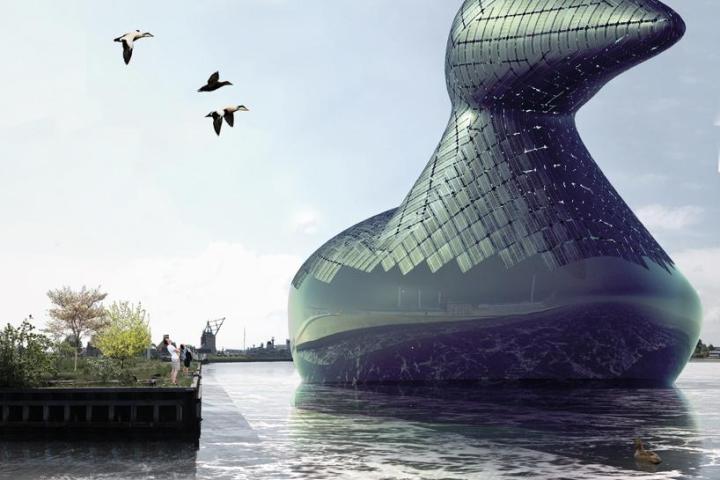
‘Energy duck’ is the work of four Brit-based designers and artists, and has been designed to help the Danish capital of Copenhagen move toward its goal of becoming the world’s first carbon-neutral capital, something it aims to achieve by 2025.
‘Some of the solar electricity is stored by virtue of the difference in water levels inside and outside the duck.’
Related: Scientists develop spray-on solar panels
According to the blog Designboom, the giant duck “has been conceived to be completely scalable depending on the situation: a 40m-high duck serves a town; a 20m-high duck serves a village, and a 4m-high duck serves an individual house.”

Additional energy would be generated via hydro turbines in the base of the duck, with a special system allowing water to flood in before being pumped out. Indeed, mere water pressure appears to generate some of the energy, according to a blog post from the Land Art Generation Initiative.
“Solar radiation is converted to electricity using low cost, off-the-shelf PV panels. Some of the solar electricity is stored by virtue of the difference in water levels inside and outside the duck.”
The floating bird would also function as a tourist attraction, with low-power LED lamps on its exterior changing color to produce an entertaining light display each night. It’d even be possible to board the giant duck to learn more about its design, as well as the city’s efforts to become carbon neutral.
The Danish government is certainly serious about its green ambitions for Copenhagen, with plans for 100 wind turbines to be placed inside its city limits. (Odd fact: Ikea has the same plans for Illinois.)
While these turbines may have upset some city dwellers concerned about their environmental impact, it’s easy to imagine that a solar-panel-covered duck floating about in the harbor would be an altogether more popular element of the government’s green energy strategy and therefore be less likely to, ahem, ruffle the feathers of the local population.
[Designboom via Time]
Editors' Recommendations
- Cailifornia has a blackout problem. Could giant flow batteries be the solution?
- How a lesson learned from lotus flowers could give us self-cleaning solar panels
- On the fence about buying solar panels? Tesla now offers them for rent


